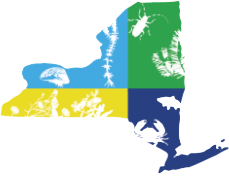To create this digest, we scan over two dozen ecology journals for papers on 1) invasive species present in New York State, or the Northeast region, 2) theoretical concepts or models which may have implications for management in New York State, or 3) economic, social, or ecological impacts of invasive species on a regional or global scale. The goal is to help managers and partners across the state of New York to more easily keep up to date on current research.
Several papers listed each month are open access, and anyone can view entire manuscripts. If an article you would like to read is not available through your institution, you can often contact lead or corresponding authors to receive a copy. If you are unable to obtain a paper this way, please contact us and we are happy to work with you to get you access.
American Journal of Botany
Biological Control
Biological Invasions
Biocontrol Science and Technology
Biodiversity and Conservation
Ecology
Evidence for Elton’s diversity‐invasibility hypothesis from belowground
Ecology Letters
Bugs scaring bugs: enemy‐risk effects in biological control systems
Species distribution models have limited spatial transferability for invasive species
Forest Ecology and Management
Population dynamics of ash across the eastern USA following invasion by emerald ash borer
Frontiers in Ecology and Evolution
The spatial signature of introgression after a biological invasion with hybridization
Functional Ecology
Journal of Applied Ecology
Effect of soil carbon amendments in reversing the legacy effect of plant invasion
Journal of Ecology
Journal of Plant Ecology
Growth, phenology and N-utilization by invasive populations of Gunnera tinctoria
Scale dependence in the phylogenetic relatedness of alien and native taxa
NeoBiota
A bobber’s perspective on angler-driven vectors of invasive species transmission
Germination of the invasive legume Lupinus polyphyllus depends on cutting date and seed morphology
Oecologia
Timing of oviposition influences the effects of a non-native grass on amphibian development
PNAS
Most invasive species largely conserve their climatic niche
Assessing the ecological niche and invasion potential of the Asian giant hornet
Restoration Ecology

